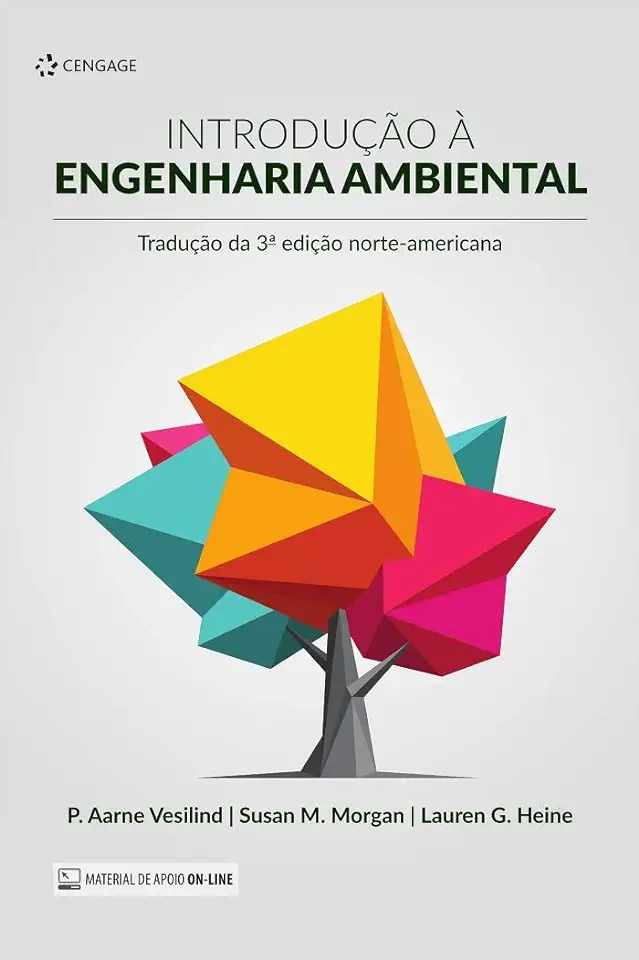
INTRODUCTION TO ENVIRONMENTAL ENGINEERING - VESILIND, P. AARNE
Introduction to Environmental Engineering: A Comprehensive Guide to Environmental Challenges and Solutions
Overview
"Introduction to Environmental Engineering" by P. Aarne Vesilind is a comprehensive and authoritative textbook that provides a thorough understanding of the principles and practices of environmental engineering. Written with clarity and precision, this book serves as an essential resource for students, professionals, and anyone interested in addressing environmental challenges and promoting sustainable practices.
Key Features:
Comprehensive Coverage: The book covers a wide range of topics, including water and wastewater treatment, air pollution control, solid waste management, hazardous waste management, and environmental impact assessment.
Real-World Applications: Each chapter is complemented with real-world case studies and examples, illustrating the practical application of environmental engineering principles.
Problem-Solving Approach: The book emphasizes problem-solving skills, providing readers with the tools and techniques to analyze and address environmental issues effectively.
Up-to-Date Information: The book incorporates the latest advancements and regulations in environmental engineering, ensuring readers have access to the most current knowledge.
Engaging Writing Style: Vesilind's engaging writing style makes complex environmental concepts accessible and interesting, fostering a deeper understanding of the subject matter.
Chapter Summaries:
Chapter 1: Introduction to Environmental Engineering
- Provides an overview of environmental engineering and its role in addressing environmental challenges.
- Discusses the history, scope, and importance of environmental engineering.
Chapter 2: Water Resources and Water Quality
- Explores the sources, characteristics, and uses of water resources.
- Examines water quality parameters and the impacts of water pollution.
Chapter 3: Water Treatment
- Presents various water treatment processes, including coagulation, flocculation, sedimentation, filtration, and disinfection.
- Discusses the design and operation of water treatment plants.
Chapter 4: Wastewater Treatment
- Introduces the sources and characteristics of wastewater.
- Covers wastewater treatment processes, such as primary, secondary, and tertiary treatment.
- Examines the design and operation of wastewater treatment plants.
Chapter 5: Air Pollution and Control
- Explores the sources, types, and effects of air pollutants.
- Discusses air pollution control technologies, including particulate matter control, gaseous pollutant control, and indoor air quality management.
Chapter 6: Solid Waste Management
- Examines the sources, composition, and characteristics of solid waste.
- Presents solid waste management practices, including collection, transportation, recycling, and disposal.
- Discusses the design and operation of landfills and incinerators.
Chapter 7: Hazardous Waste Management
- Introduces the classification and characteristics of hazardous waste.
- Covers hazardous waste management practices, including generation, storage, transportation, treatment, and disposal.
- Examines the regulations and policies governing hazardous waste management.
Chapter 8: Environmental Impact Assessment
- Explains the purpose and process of environmental impact assessment.
- Discusses the methods and techniques used in environmental impact assessment.
- Examines the role of environmental impact assessment in decision-making.
Conclusion:
"Introduction to Environmental Engineering" by P. Aarne Vesilind is an indispensable resource for anyone seeking to understand and address environmental challenges. Its comprehensive coverage, real-world examples, problem-solving approach, and engaging writing style make it an invaluable tool for students, professionals, and anyone passionate about environmental sustainability. By mastering the principles and practices presented in this book, readers will be well-equipped to contribute to a healthier and more sustainable future for our planet.
Enjoyed the summary? Discover all the details and take your reading to the next level — [click here to view the book on Amazon!]